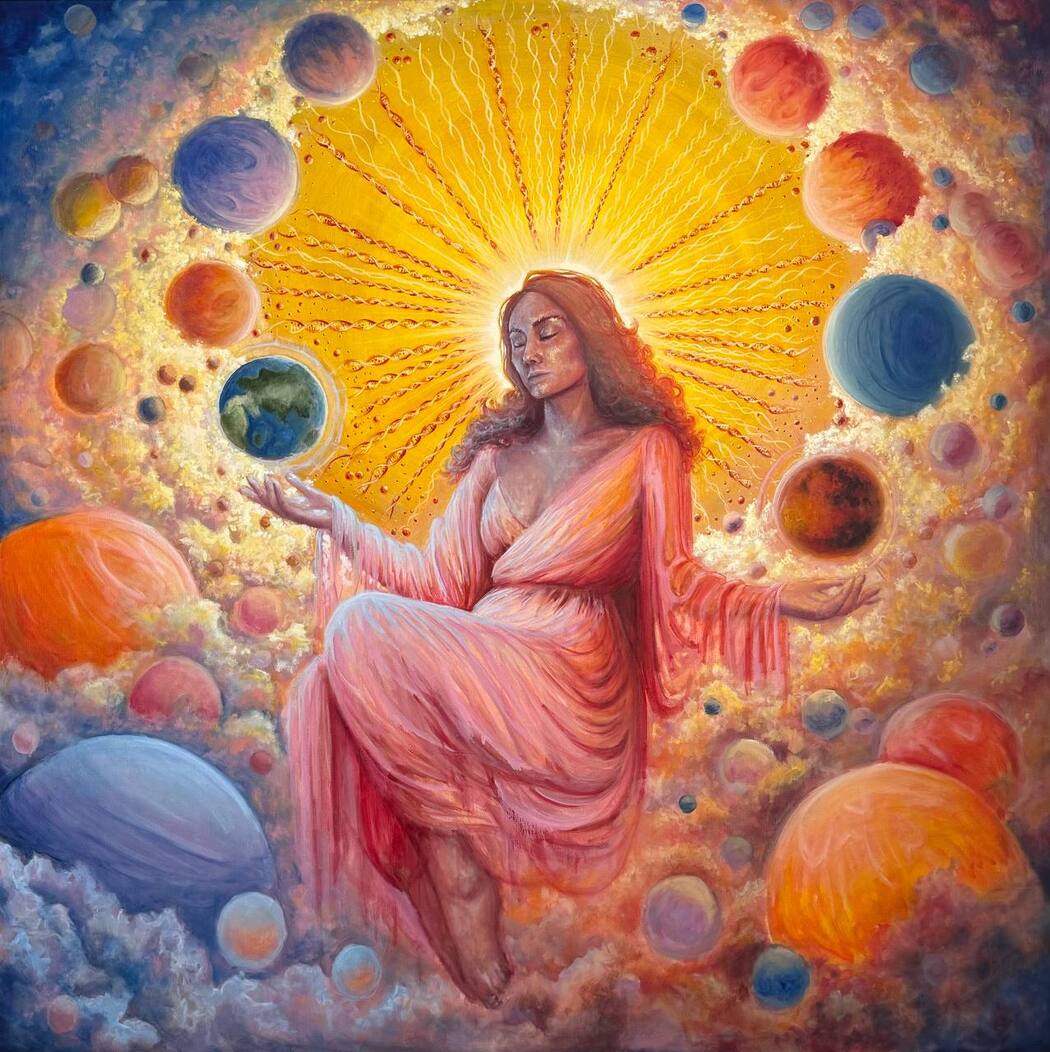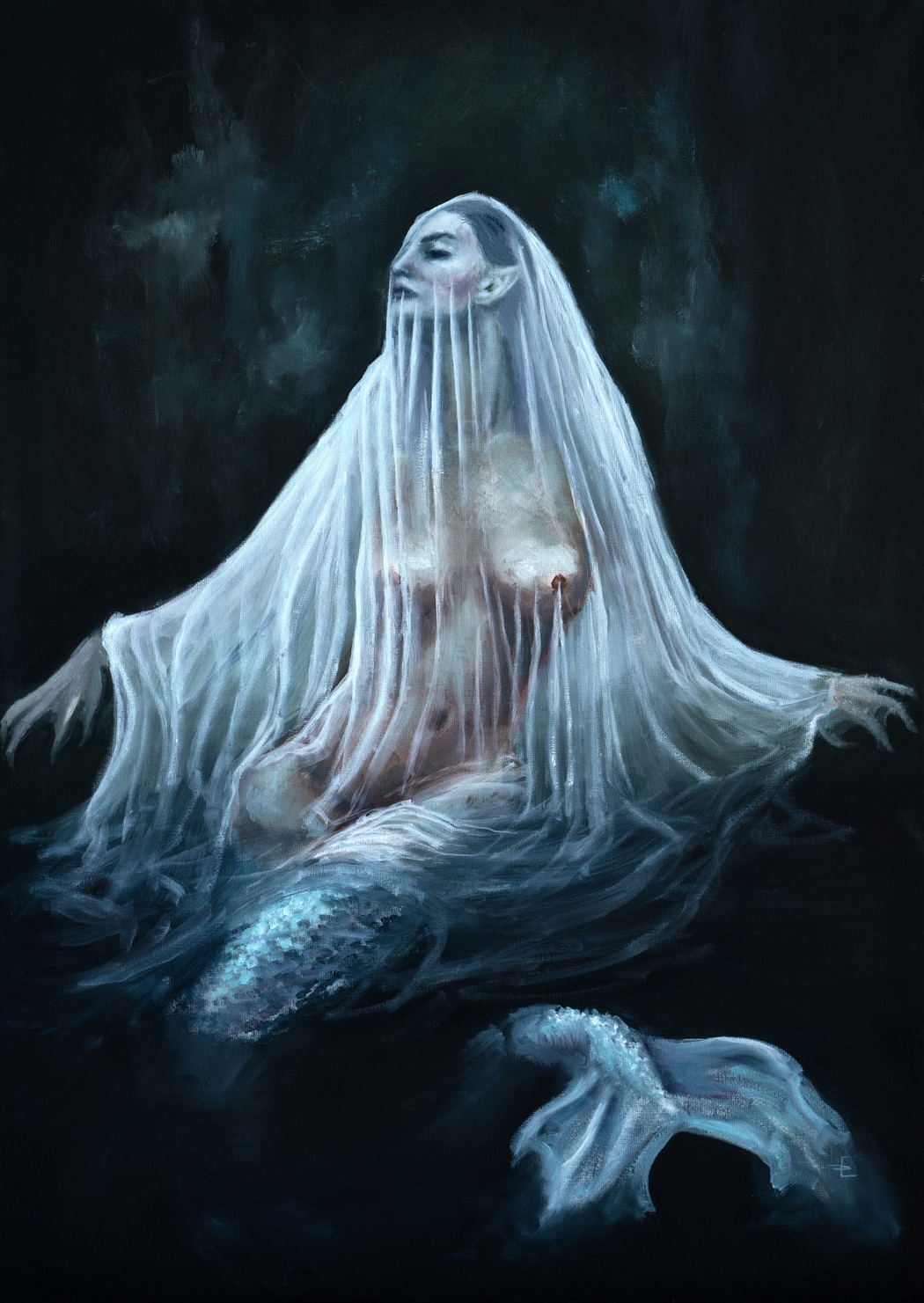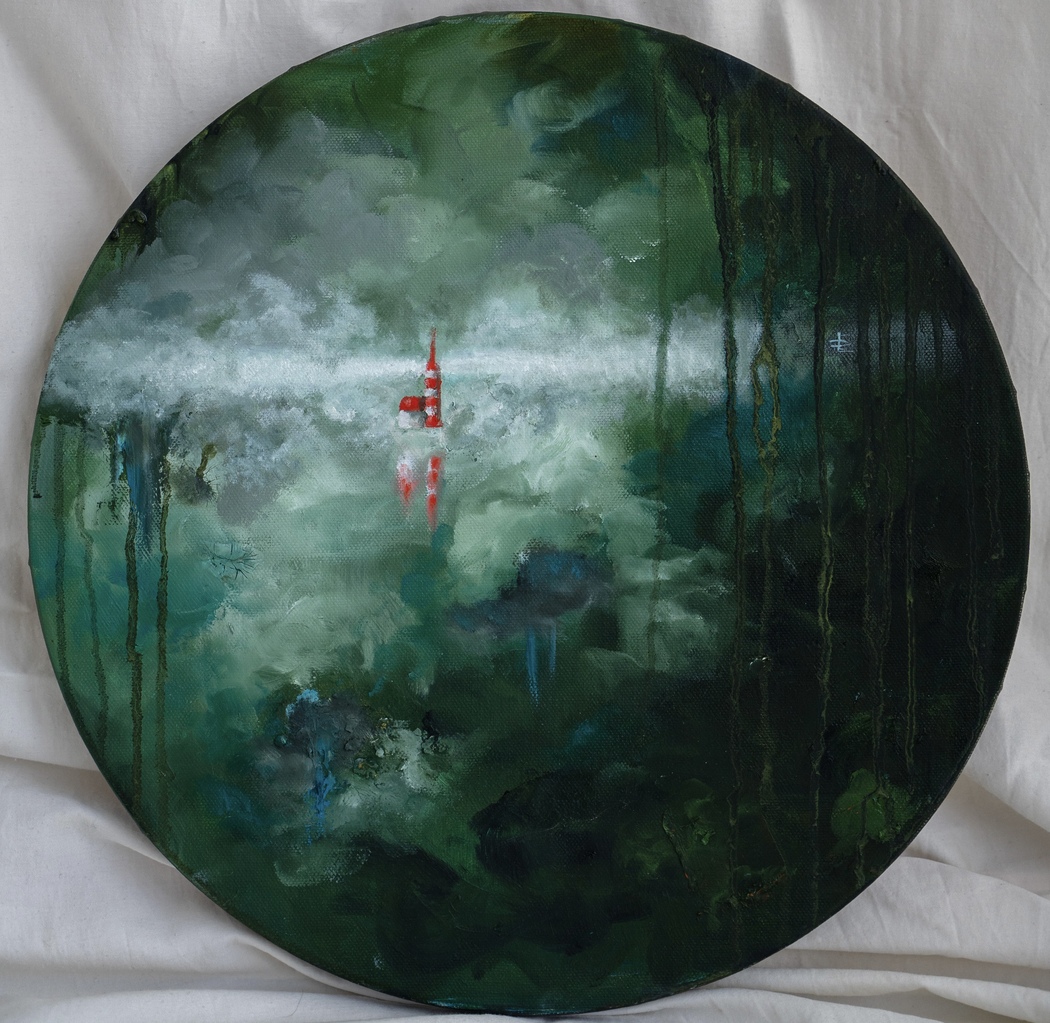Ekaterina Demishkan
Year of birth: 1990.
Your education: I’ve always been drawn to the world of art, but I entered it on my own. I am self-taught, but I never stop my creative growth. I am always searching and learning new things.
Describe your art in three words: Symbolism, Impressionism, Mysticism. But, if I can use a few more words, my style is symbolic impressionism. My goal is to create art that not only decorates a space but evokes emotions, conveys a sense of the moment, makes one reflect, and opens new perspectives of perception.
Your discipline: In the diversity of my creative path, I would highlight my work in art and teaching as the core.
Website | Instagram
Your work combines symbolic impressionism and philosophical allegories. Could you share the process you go through when deciding on the symbolism behind your paintings?
I don’t work with pre-written sketches—I have only a general direction, information from the collective field, and an impulse that I latch onto at the beginning. In the process, interesting details and symbols “burst” into the image like flashes of enlightenment—they seem to ask to be on the canvas. The plot and images develop organically, sometimes unexpectedly for me. It feels like connecting to a certain flow from which I “pluck” the necessary elements to build a cohesive, allegory-filled mythology on the canvas. It’s an intuitive, yet deep and philosophical process of awareness, acceptance, and reflection.

Ekaterina Demishkan | The Great Recursive Error | 2025
Your art seems to be a bridge between tradition and innovation, especially with the use of digital art elements. How do you see the role of digital media in contemporary art, and how does it influence your traditional oil painting?
Each of my works invariably begins with classic, analog painting, but often “evolves” and takes on new forms. It’s important for me to go beyond the flat surface of the canvas and allow my characters to “live” in other dimensions—sound, movement, interactivity. Digital art becomes an extension of my thoughts, a way to enhance them and reach a new audience. It’s not a replacement for traditional painting but an expansion of its possibilities. Thanks to the digital environment, I can delve deeper into the themes that concern me and more precisely convey the mood, atmosphere, and meaning.
You’ve mentioned that your art explores the cycle of life and hidden connections in the world. How do you translate these profound concepts into visual imagery in your paintings?
Each of my works is a story encoded in images and symbols. I rely on cultural, religious, scientific, and philosophical archetypes, but I process them on an intuitive level—translating them into a language of visual metaphors. Often, this happens automatically: a theory or idea gives birth to an image, which then grows with details and finds its place in the composition. The visual language allows me to express complex ideas about time, nature, and humanity, uniting them in a single symbolic narrative.
 Ekaterina Demishkan | Mermaid | 2023
Ekaterina Demishkan | Mermaid | 2023
In your digital art, you experiment with animation and sound. How does the incorporation of movement and sound change the way your audience experiences your work?
Sound and movement enhance the sense of presence. Even a static image can be meditative or hypnotic, but animation and audio create the effect of full immersion. It’s not just an addition—it’s another way to “speak” the symbol, to reveal its potential. This multilayered perception allows the viewer to feel the narrative of the painting with their skin, helps “decipher” the symbols, and feel inside the image rather than just in front of it.
Your works, particularly those like Mermaid and Dragonborn, evoke a strong mystical and dreamlike atmosphere. Do you draw from specific cultural or personal experiences when crafting these mythical elements?
My images are formed at the intersection of personal experience, cultural memory, and the collective unconscious. I often rely on archetypes—those that appear in folklore, dreams, and ancient mythology—but they pass through my personal lens: memories, emotions, experiences, and internal states. It’s an intuitive process where mythology becomes a reflection of the inner world, not just a cultural quote. Each of my works can be viewed either separately, as an independent piece filled with symbolism and references, or “leaning” on my identity as the creator. Both approaches guarantee an emotional roller coaster, but the second approach definitely reflects a richer spectrum of feelings and experiences.
How do you balance emotional expression with intellectual reflection in your art? Is there a particular emotion or thought that often guides your work?
My art is born at the crossroads of intuition and analysis. Every time I sit down in front of a new canvas, I start a story where I ask myself questions, and as I paint, the answers literally “find” themselves inside me. It all begins with a question, an inner dialogue, where rational knowledge, experiences, and observations mix like ingredients in a vibrant cocktail, and in a moment of focused immersion, they “spill out” onto the canvas in the form of an artistic image. I am constantly accompanied by a sense of search, a desire to understand the complex internal and external connections—and it is this feeling that often guides my hand.
 Ekaterina Demishkan | Lighthouse | 2023
Ekaterina Demishkan | Lighthouse | 2023
You have also been involved in organizing exhibitions and engaging with the art community. How do you feel that your role as an organizer impacts your own creative practice?
Organizing exhibitions, both personal and group ones, is a special form of dialogue with myself, other artists, and the audience. It requires responsibility, attentiveness, and endless empathy, as you work with stories and experiences, feelings, and emotions. It develops the ability to see from the outside, to be a curator of one’s own creative path alongside the works of others. Thanks to this activity, I better understand the artistic context in which I find myself and feel more connected to the living process of contemporary art. It’s not just an exercise in visual literacy—it’s physical and emotional labor and endless growth.
What archetypes do you work with most often in your paintings, and why do you feel drawn to them?
I am drawn to the archetypes of the Seeker, the Shadow, and the Great Mother. The Seeker is the part that constantly strives to go beyond the obvious and find the hidden. The Shadow is the dialogue with what we reject in ourselves, but which shapes us. And the Great Mother is the image of all-encompassing nature, the cycle of life and death, constant rebirth. These images I don’t so much choose as discover. They seem to come to the canvas on their own.
If your paintings could speak, what would they say to the viewer?
They would say: “Don’t rush to understand. Stop. Feel.” My paintings don’t require decoding; they offer a lived experience, a moment of inner recognition that may be more important than any verbal meaning.
Have you ever had the sensation that a painting “painted itself”? Can you tell us about this experience?
This happens quite often. The most vivid case is the work “The Great Recursive Error.” I started with one idea, but as I moved the brush, the character and the environment literally “burst” onto the canvas on their own. The symbolism, form, even the expression on the face—it all seemed to come from depths that I only realized later. It’s the feeling that you are not the author but a conduit.
Which work has been the most unexpected in terms of its result or emotional impact?
Probably The Rising Venus. I painted it as an image of feminine transformation, but as I worked on it, it became an embodiment of inner loneliness and the longing for connection. The viewers, however, began to see in it an archetypal force and even something sacred. This taught me to trust the unpredictability of art.
If you were asked to decorate a building’s facade, what would you depict?
It would be a massive symbolic and sensory landscape resembling an altar wall: with images of the elements, the cycle of the seasons, and inlays of symbols that reveal the theme of the unity of all living things. I would make the facade a breathing space, where each passerby could find something personal—a question, an answer, or a reflection.

Leave a Reply